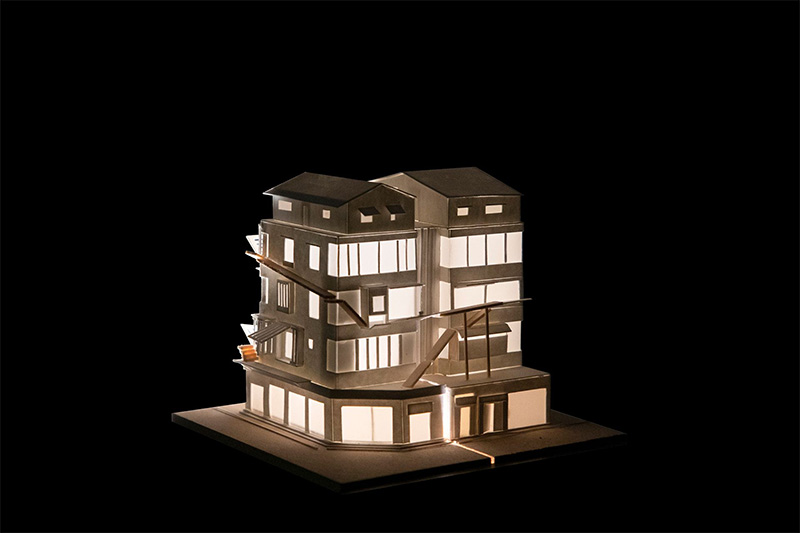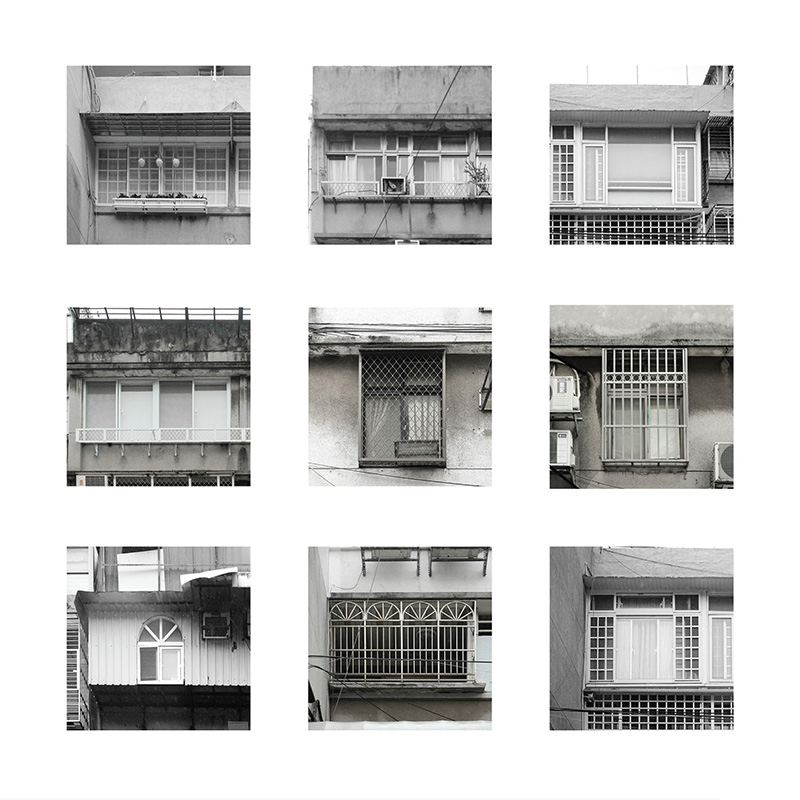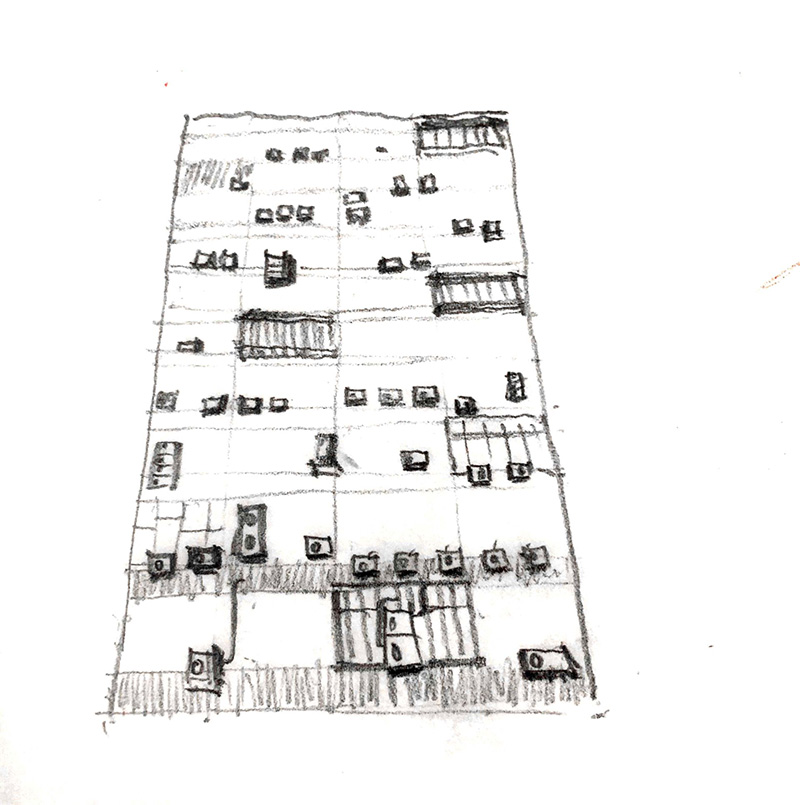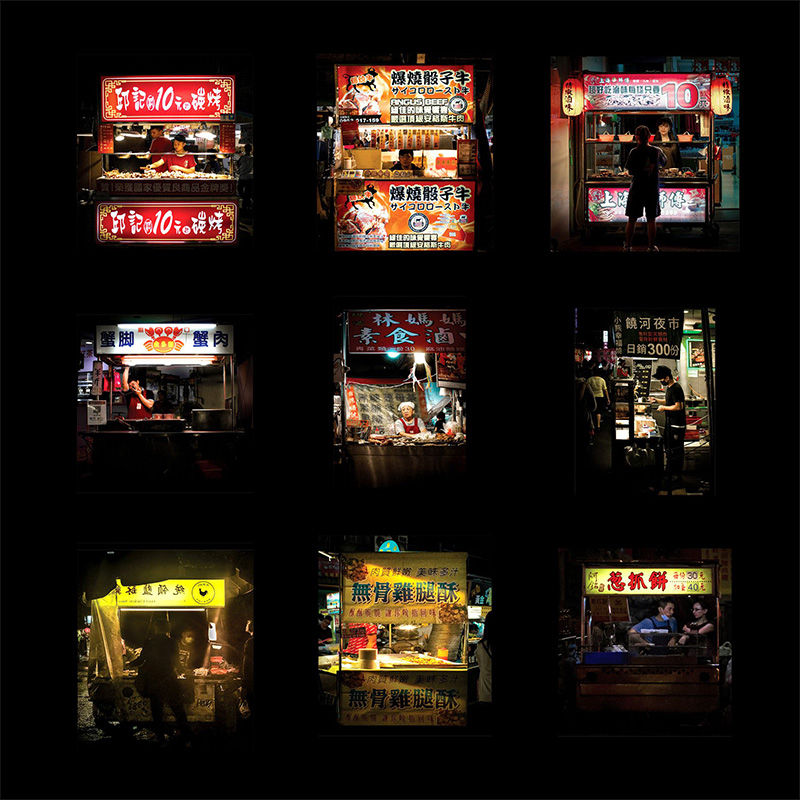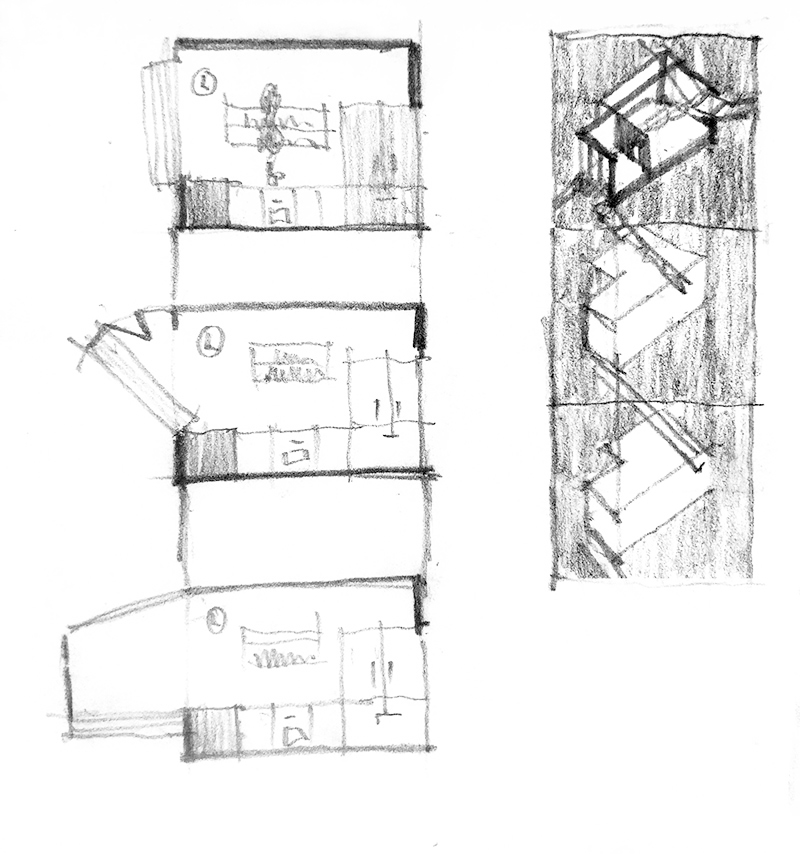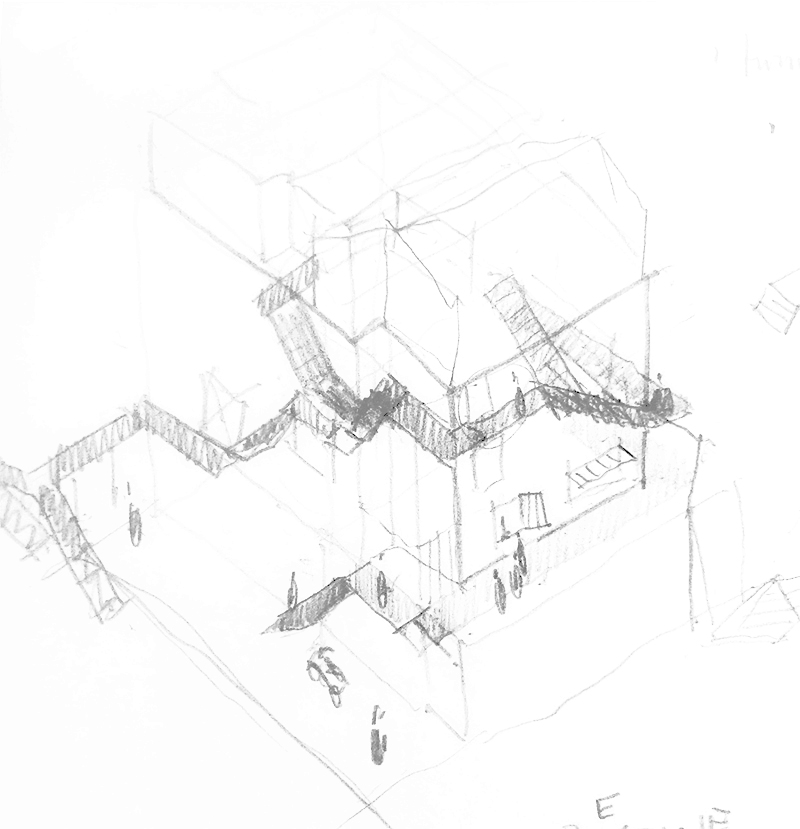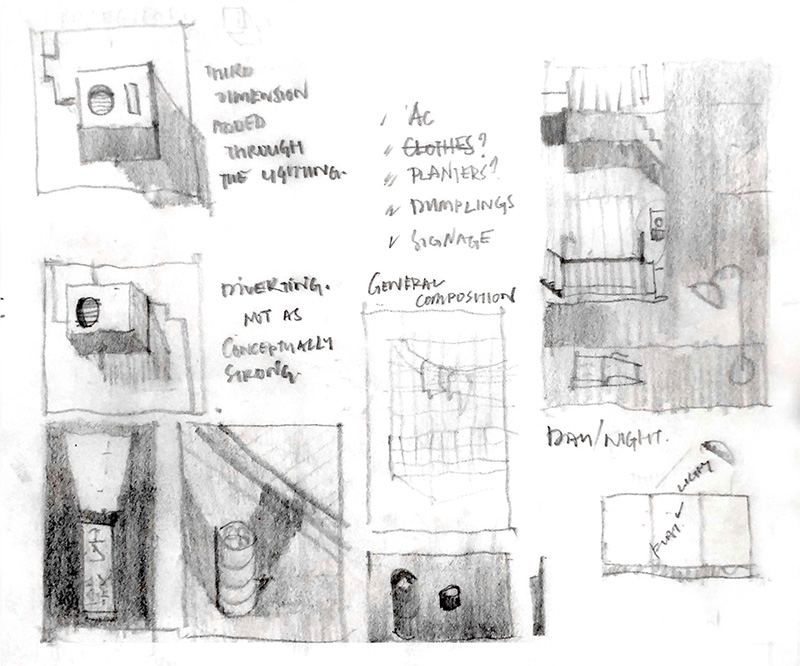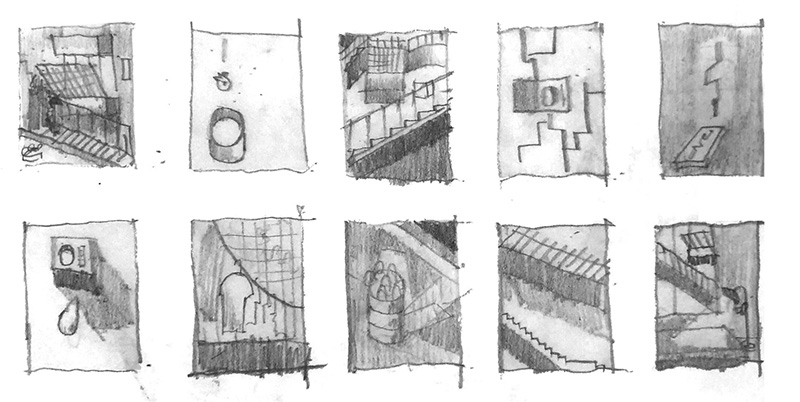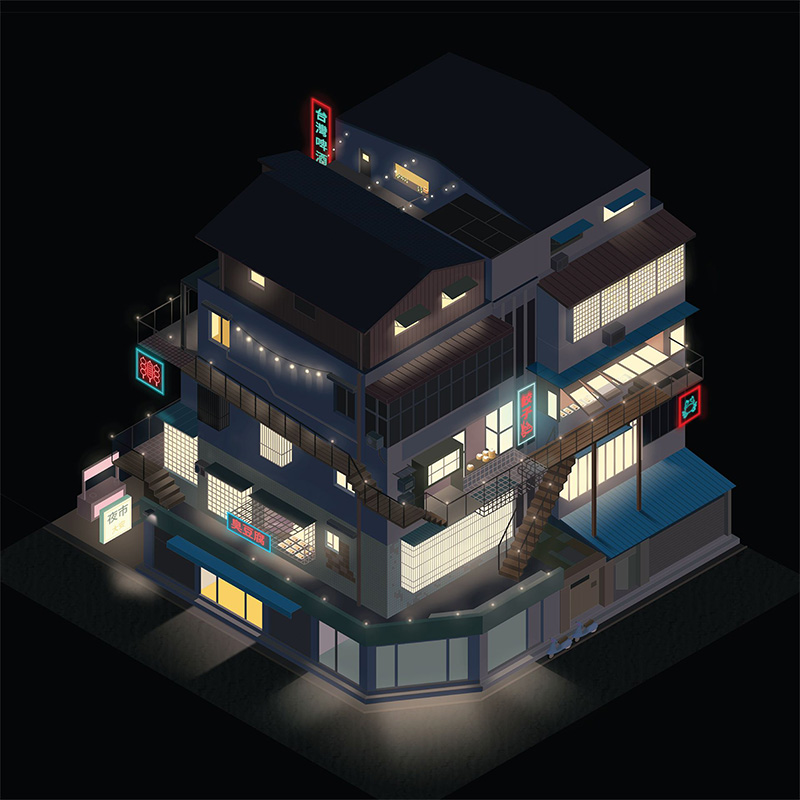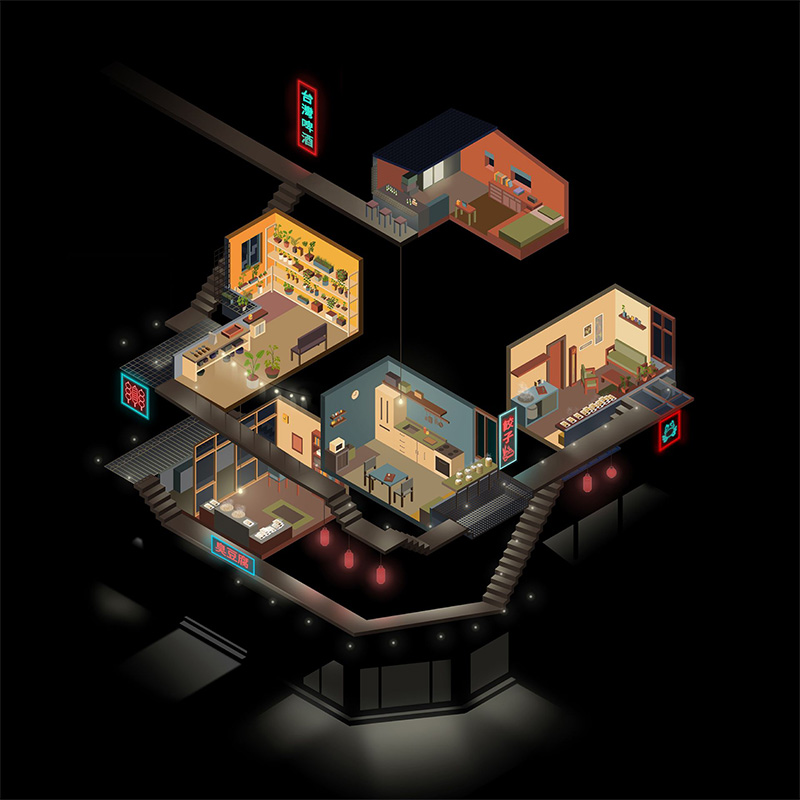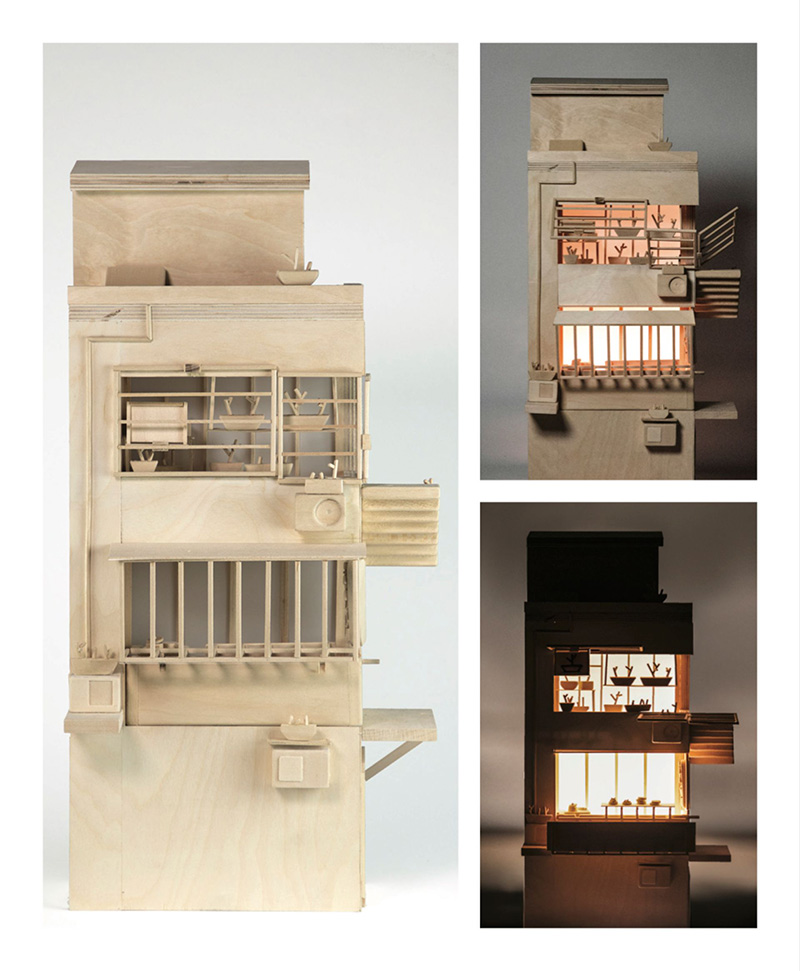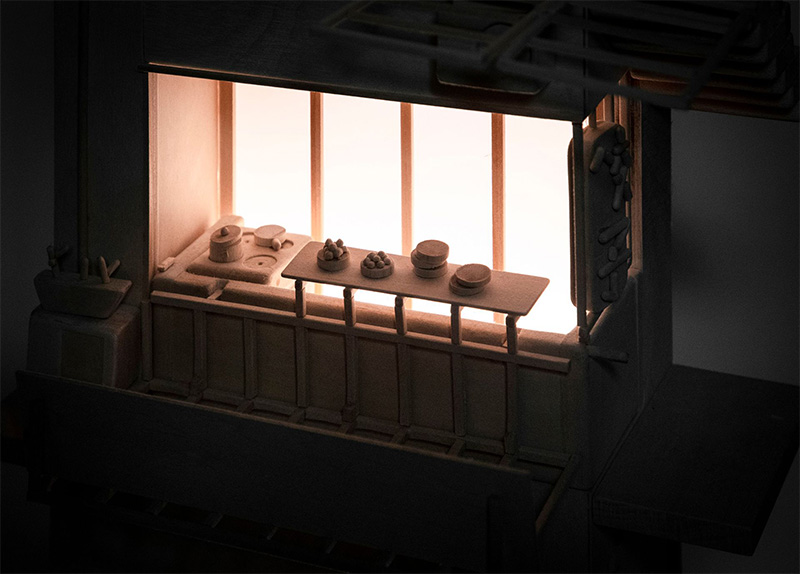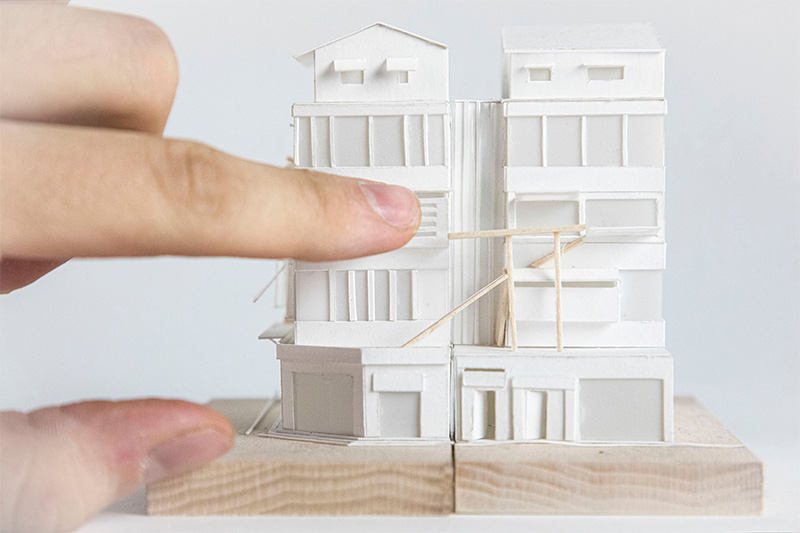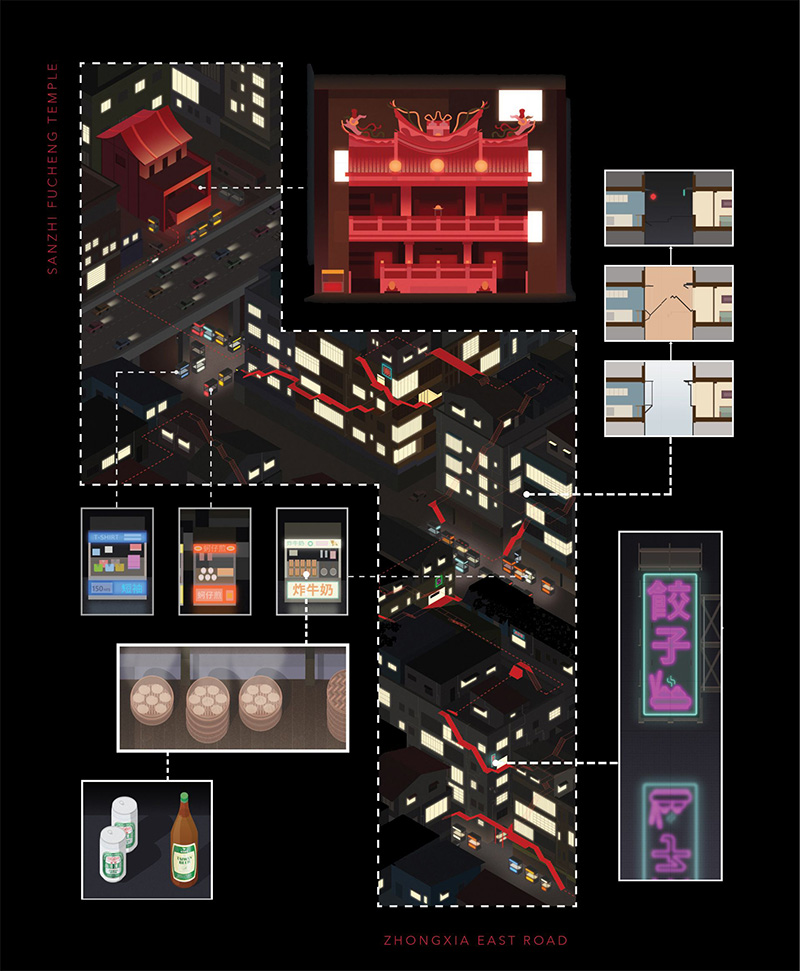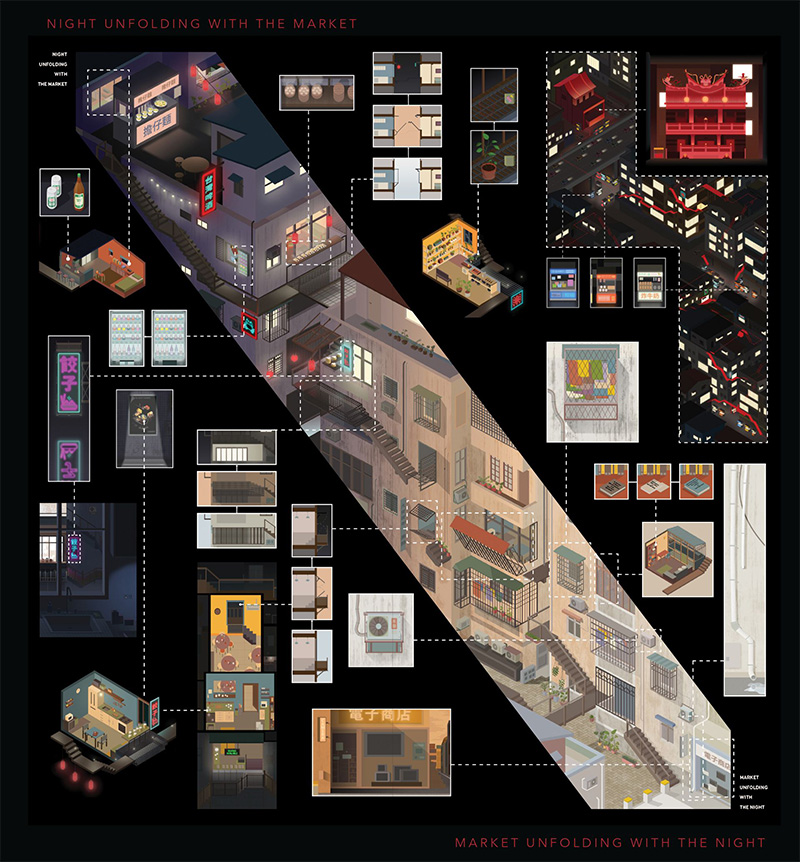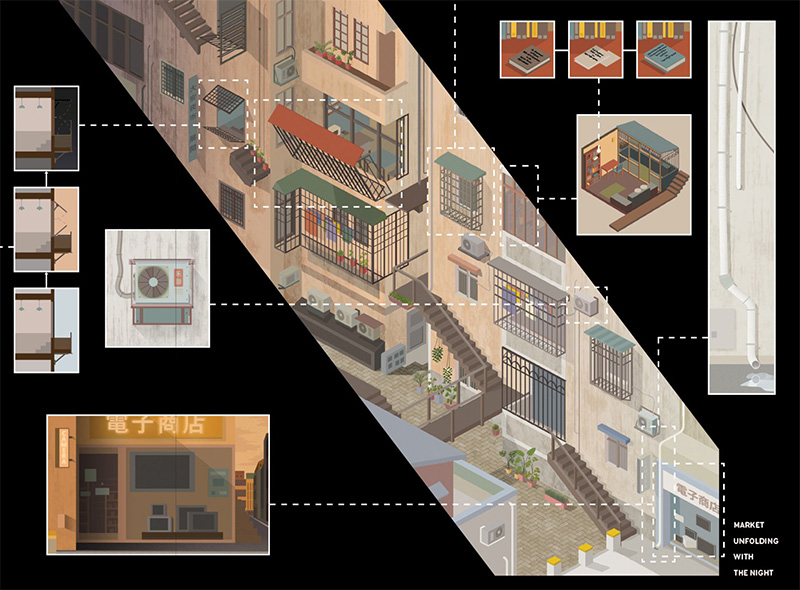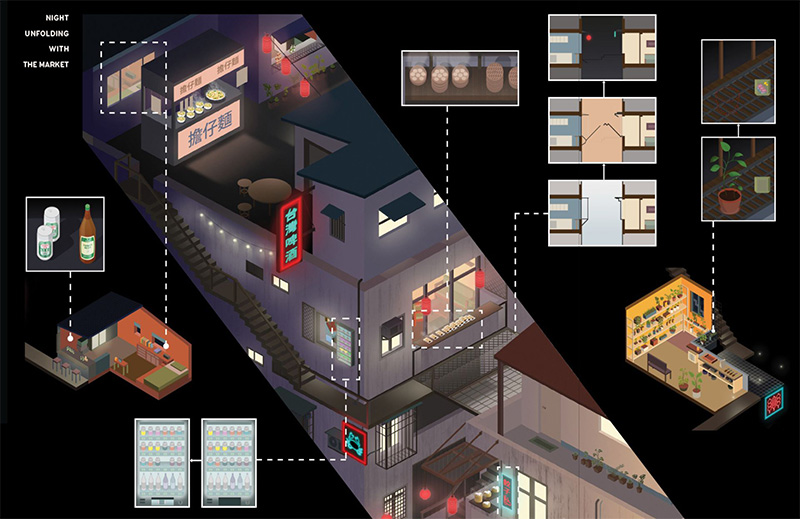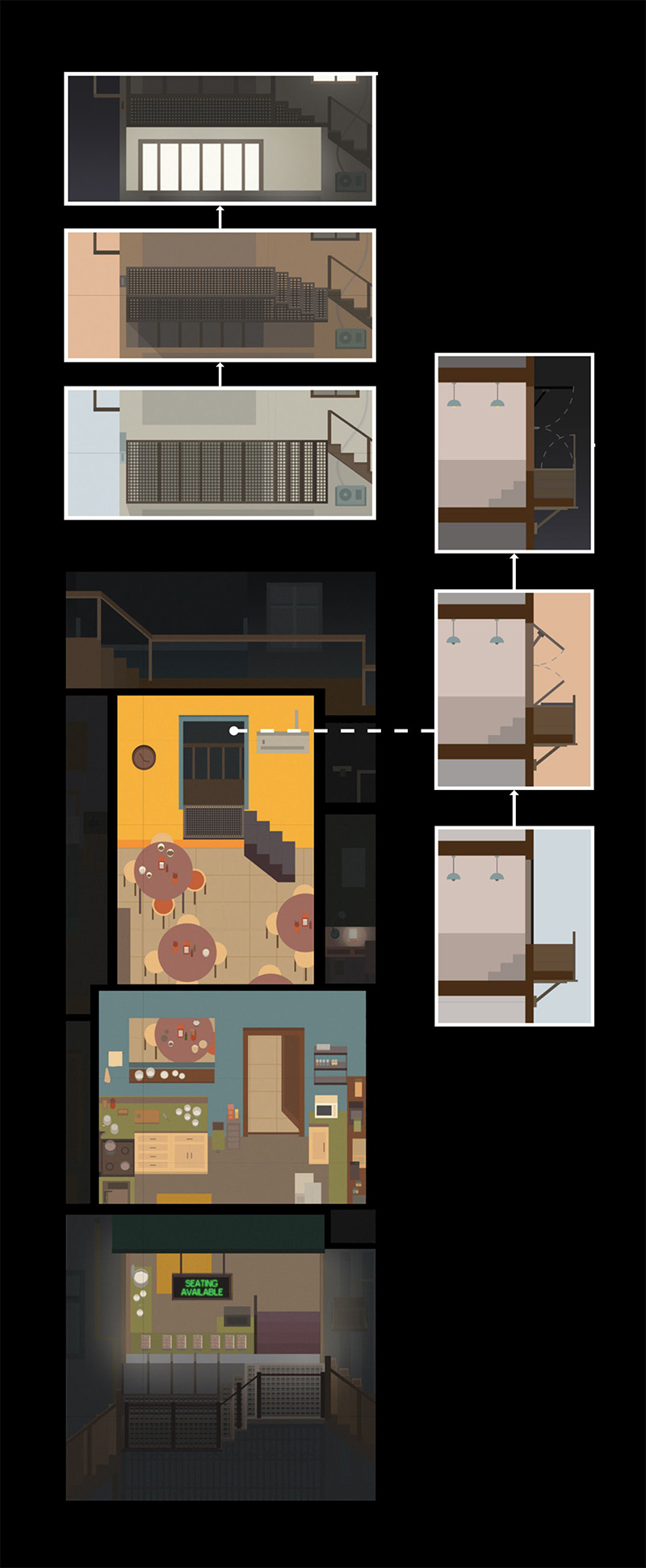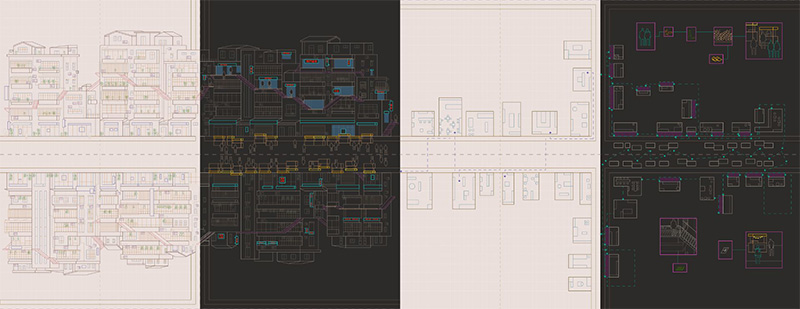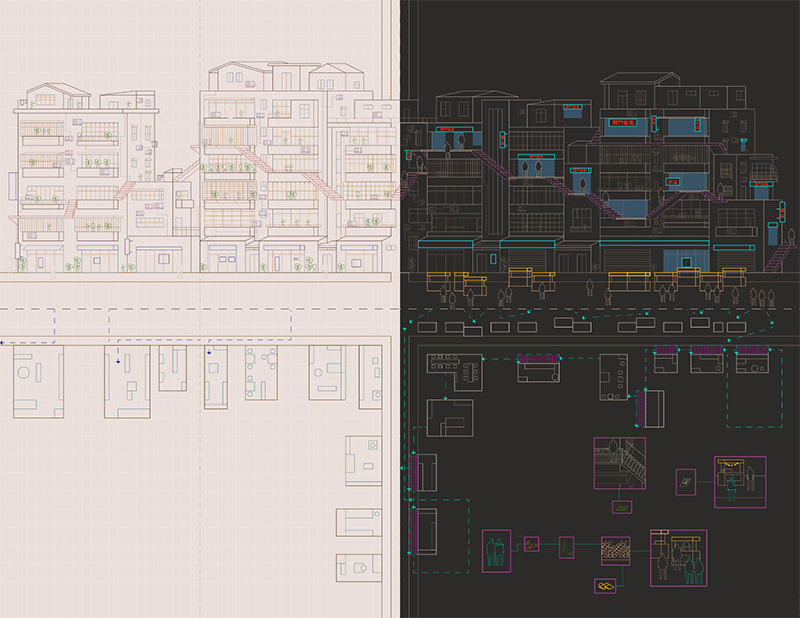Now a part of the vernacular of Taipei, steel and sheet metal cages added to the windows, balconies, and to roof of apartments increase house sqm to respond to the exponentially growing real-estate prices in the hyper-condensed urban condition of the city.
However, they have come to be deemed to be ‘eye-sores’ and illegal. With such arguments, the Taiwanese government dismantles these additions, without addressing the underlying socio-economic issues.
Though also technically illegal, the vernacular night markets in Taipei are one of the biggest attractions of the city, generating a substantial amount of revenue, and thus are ‘overlooked’ by the government.
Drawing inspiration from the spatio-temporally performative practice of the night market, this project proposes to turn the facades full of cages into a vertical nightmarket-scape, making use of the material and scalar similarities of both typologies.
At night, the cages unfold to connect static pieces of staircases added on, and balconies light up as night market stalls. They do not only provide a new method of generating income and connectivity for the residents, they also challenge the existing socio-economically aesthetic perception of the balcony additions, giving them a chance at beauty.
The Taiwanese government considers the additions as ‘eye-sores’ and justify their illegality. Thus the project seeks to provoke the ulterior intersection of aesthetics and the socio-economic context.
How can design re-perceptualize objects associated with surrounding economic issues, and reveal their aesthetic potential? Rather than re-designing or formally altering the steel cages on the balconies, this project aims to alter how they are perceived, thus challenging the aesthetic justification of their illegality.
Taipei already has a typology that challenges illegality through socio-aesthetic means: the night market. Though the night markets were ( and some still are ), illegal when they started, through their spatio-temporally performative nature and cultural productiveness they were granted a governmental allowance.
Balconies are extensions of the private space into the public. They are the negotiator between the apartment and the street. The existing additions of steel cages disrupt this dynamic by extending the private realm further, altering and limiting the way the street is visually engaged.
By proposing that these cages can start to fold out to become walkways and night market stalls, the design subverts the nature of this relationship, thus blurring the line between the private and the public and questioning their hard distinction.
In the Taipei night market, privately owned stalls gather together, turning the street into a ‘collective space’, where the distinction of the private and the public becomes indistinguishable. This sense of space allows a site for collectivist social solidarity in the face of government policing.
When a night market stall is fined, the fine amount is equally distributed amongst every stall in the market, ensuring the financial sustainability for everyone participating. Thus the design hopes to foster this sense of solidarity through appropriating the balconies into a collective space.
At the scale of the building, the neighbors are no longer only the ones who live across from you but are now anyone who contributes to the vertical night-market. Suddenly their living room connects to your kitchen which leads into your neighbor’s plant-filled studio.
This continuity of the walkways expands across buildings and is dependent on the unanimous participation of the residents in a collective manner. At the urban scale, the Sanzhi Fucheng Temple, a disused temple in Da’an, is the terminus point for the market which generates finances to restore the structure and references how Taiwan night markets historically started in temple plazas.

